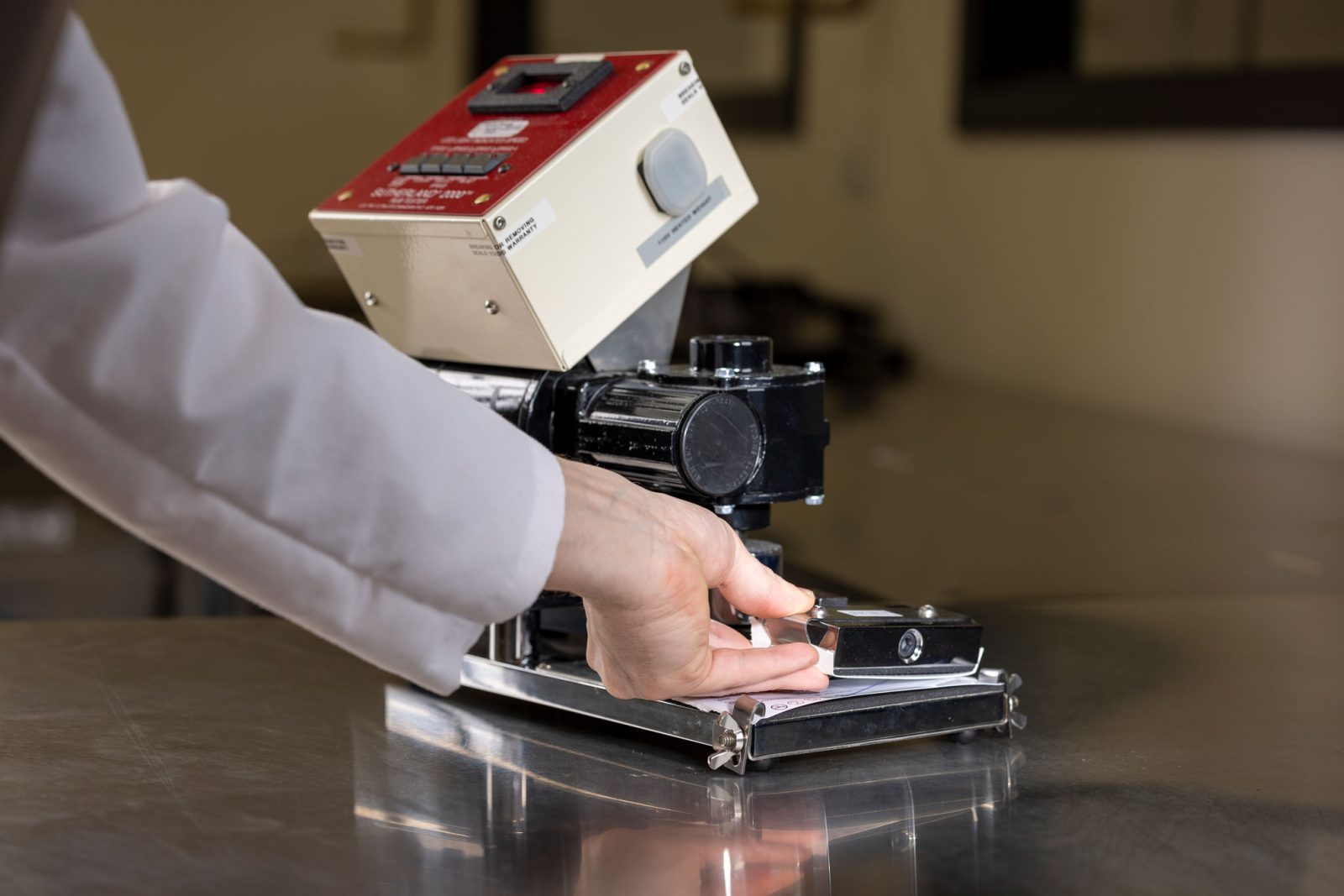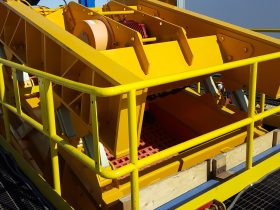1. An Introduction to Material Rub Testing
Understanding the Importance of Quality Control
Quality control is a crucial aspect of any manufacturing process, especially when it comes to ensuring the durability and longevity of products. Material rub testing plays a significant role in maintaining product quality and customer satisfaction. By subjecting materials to rigorous rub testing, manufacturers can identify potential issues such as poor adhesion, color transfer, or surface abrasion. This allows them to make necessary improvements and deliver products that meet the highest standards of performance and reliability.
The Science Behind Rub Testing
Rub testing is a scientific method used to evaluate the resistance of materials against rubbing or frictional forces. The test involves applying controlled force or motion to the surface of a material and measuring its response. The primary goal is to determine the material’s ability to withstand wear and tear caused by normal use or external factors. Rub testing helps manufacturers understand how their products will perform under real-world conditions and make informed decisions regarding material selection and product design.
The science behind rub testing involves examining various factors, including the properties of the material being tested, the testing equipment, and the test methods utilized. Material characteristics such as hardness, flexibility, and surface finish can significantly impact the rub resistance of a material. Factors like temperature, humidity, and the presence of contaminants can also affect the test results. By understanding these scientific principles, manufacturers can ensure accurate evaluation and reliable results during rub testing.
Common Rub Testing Equipment
There are various types of equipment used for material rub testing, each designed for specific testing requirements. Some common equipment includes:
- Taber Abraser: This equipment uses a rotating platform with attached abrasive wheels or pads. It applies controlled and repetitive rubbing or frictional forces on the material surface to simulate wear and abrasion.
- Crockmeter: Also known as a rub fastness tester, the crockmeter evaluates the color transfer or crocking properties of a material. It uses a specified amount of pressure and a reciprocating motion to rub a standardized fabric or paper swatch against the material surface.
- Falling Sand Tester: This equipment evaluates the resistance of coatings or finishes to the abrasion caused by falling sand or other abrasive particles. It measures the amount of coating or finish loss after a specified number of sand impacts.
When selecting the appropriate rub testing equipment, manufacturers should consider factors such as the type of material, testing requirements, and industry standards. Understanding the capabilities and limitations of each equipment type is essential for accurate and relevant testing results.
2. Key Factors Affecting Material Rub Resistance
Material Selection for Optimal Rub Resistance
Choosing the right materials that exhibit high rub resistance properties is crucial for enhancing product durability and longevity. Rub resistance depends on various material characteristics, including hardness, surface finish, and flexibility. Harder materials with smoother surface finishes tend to have better resistance against rubbing or abrasion. Manufacturers should carefully evaluate different material options and consider their intended applications and expected usage conditions. Conducting rub tests on various materials can help identify the most suitable options for specific products.
Understanding Environmental Effects on Rub Testing
Environmental conditions, such as temperature and humidity, can significantly impact the accuracy and reliability of rub testing outcomes. Higher temperatures can soften materials, making them more susceptible to rubbing or abrasion. Similarly, higher humidity levels can affect the performance of certain materials, especially those prone to moisture absorption. Manufacturers should account for these environmental effects during rub testing to ensure the test results reflect the real-world conditions that the materials will be exposed to.
The Role of Coatings and Finishes
Coatings and finishes play a vital role in enhancing the rub resistance of materials. These protective layers can provide an extra barrier against frictional forces and prevent damage to the underlying material. However, the effectiveness of coatings and finishes can vary depending on factors such as application technique, curing process, and compatibility with the base material. Manufacturers should carefully assess the coating or finishing options available and ensure they are properly applied and maintained to maximize rub resistance.
3. Importance of Rub Testing in Various Industries
Automotive Industry: Ensuring Long-lasting Interior Surfaces
In the automotive industry, rub testing plays a critical role in maintaining the quality and durability of interior surfaces such as seats, dashboards, and door panels. These surfaces are constantly subjected to rubbing or contact from passengers’ clothing, accessories, and other objects. Rub testing helps automotive manufacturers select materials and finishes that can withstand repeated use without significant wear or color transfer. By conducting thorough rub testing, manufacturers can ensure that the interior surfaces of vehicles retain their appearance and functionality throughout the vehicle’s lifespan.
Furniture and Upholstery: Preserving Appearance and Functionality
Furniture manufacturers rely on rub testing to assess the durability and longevity of their products. Whether it’s a sofa, chair, or mattress, furniture often comes into contact with different fabrics, clothing, or even pet claws. Rub testing helps determine the resistance of upholstery materials to color transfer, frictional wear, and surface damage. By selecting materials with optimal rub resistance, furniture manufacturers can ensure that their products maintain their appearance and functionality for years, even with regular use.
Textile and Apparel Industry: Ensuring Colorfastness and Durability
The textile and apparel industry utilizes rub testing to evaluate the colorfastness and durability of fabrics and garments. Rub testing allows manufacturers to determine the color transfer properties of materials, especially during laundering or frictional contact. It helps ensure that garments retain their color vibrancy, even after multiple washes or wearing. Additionally, rub testing assesses the overall durability of fabrics against rubbing or abrasion. By conducting extensive rub testing, textile and apparel manufacturers can deliver high-quality products that meet the expectations of consumers.
4. Best Practices for Conducting Material Rub Testing
Standardized Testing Procedures: ASTM and ISO Guidelines
Standardized testing procedures are essential for maintaining consistency and reliability in rub testing. Organizations such as ASTM International and ISO (International Organization for Standardization) provide guidelines and standards for conducting material rub testing. These guidelines specify parameters such as test methods, equipment specifications, and data analysis techniques. Manufacturers should familiarize themselves with the relevant standards and ensure that their rub testing procedures adhere to these guidelines. Following standardized testing procedures helps ensure accurate and comparable results across different laboratories and industries.
Proper Sample Preparation Techniques
Sample preparation is crucial for obtaining accurate and consistent rub testing results. Manufacturers should carefully prepare the samples by following established protocols, including cutting them to the appropriate size and shape. The surface condition of the samples should be consistent and free from any defects or contaminants that may affect the test results. Additionally, it is essential to condition the samples to the desired temperature and humidity levels before conducting the rub tests. Proper sample preparation techniques ensure that the test results accurately reflect the material’s rub resistance properties.
Data Analysis and Interpretation
Effective analysis and interpretation of rub testing data are vital for making informed decisions and improving product quality. Manufacturers should carefully analyze the test results and consider factors such as the number of cycles completed, the degree of wear or color transfer, and any other observed changes. By interpreting the data correctly, manufacturers can identify patterns, trends, or anomalies and make necessary adjustments to materials, coatings, or finishing processes. Continuous evaluation and improvement based on rub testing data can lead to enhanced product performance and customer satisfaction.
By mastering the secrets behind material rub testing and implementing best practices, manufacturers can ensure the development of high-quality products that meet or exceed customer expectations. Rub testing serves as a critical quality control tool, allowing manufacturers to make informed decisions throughout the product development process. Whether in the automotive, furniture, textile, or any other industry, the knowledge gained from rub testing enables manufacturers to deliver durable, reliable, and aesthetically pleasing products that stand the test of time.
FAQ
Question: What is material rub testing?
– Material rub testing is a scientific method used to evaluate the resistance of materials against rubbing or frictional forces. It involves applying controlled force or motion to the surface of a material and measuring its response to determine its ability to withstand wear and tear caused by normal use or external factors.
Question: Why is rub testing important?
– Rub testing is important for maintaining product quality and customer satisfaction. It helps manufacturers identify potential issues such as poor adhesion, color transfer, or surface abrasion, allowing them to make necessary improvements and deliver products that meet the highest standards of performance and reliability.
Question: How does material selection affect rub resistance?
– Material selection plays a crucial role in rub resistance. Harder materials with smoother surface finishes tend to have better resistance against rubbing or abrasion. Manufacturers should carefully evaluate different material options and consider their intended applications and expected usage conditions to choose materials with optimal rub resistance.
Question: What are the common equipment used for rub testing?
– Some common equipment used for material rub testing include the Taber Abraser, Crockmeter, and Falling Sand Tester. The Taber Abraser uses rotating abrasive wheels or pads to simulate wear and abrasion, the Crockmeter evaluates color transfer properties, and the Falling Sand Tester measures the resistance of coatings or finishes to abrasive particles.
Question: How do environmental conditions affect rub testing?
– Environmental conditions, such as temperature and humidity, can significantly impact the accuracy and reliability of rub testing outcomes. Higher temperatures can soften materials, making them more susceptible to rubbing or abrasion. Higher humidity levels can affect the performance of certain materials, especially those prone to moisture absorption.
Question: What role do coatings and finishes play in rub resistance?
– Coatings and finishes can enhance the rub resistance of materials by providing an extra barrier against frictional forces and preventing damage to the underlying material. However, the effectiveness of coatings and finishes can vary depending on factors such as application technique, curing process, and compatibility with the base material.
Question: In which industries is rub testing important?
– Rub testing is important in industries such as automotive, furniture, and textile/apparel. In the automotive industry, it helps maintain the quality and durability of interior surfaces. In the furniture and upholstery industry, it assesses the durability of products. In the textile and apparel industry, it ensures colorfastness and durability of fabrics and garments.
Question: What are some best practices for conducting rub testing?
– Some best practices for conducting rub testing include following standardized testing procedures provided by organizations such as ASTM and ISO, proper sample preparation techniques, and effective data analysis and interpretation. Following these best practices helps ensure consistent and reliable results for accurate evaluation and decision-making during rub testing.








